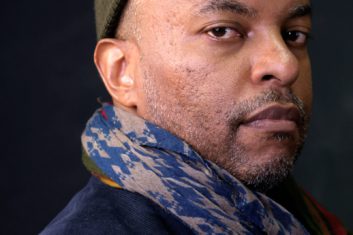I was incredibly lucky to attend the Teaching Artist Job Information Panel, an event hosted by Community-Word Project and NYU. It was an all-star cast with panelists from the Center for Arts Education, DreamYard Project, Free Arts NYC and Wingspan Arts. Panelists shared the fundamental methodologies and values behind their organizations and what they look for in a Teaching Artist.
I think the most important sentiment that emerged from the discussion was the need for arts organizations to come together to better support teaching artists, each other, and the entire arts education field. Some of the organizations present, such as DreamYard Project and Community-Word Project have already developed comprehensive professional development opportunities for Teaching Artists, but more organizations need to offer training opportunities. It was exciting and refreshing to hear that these organizations are aware of these needs and that in participating in the panel, they were committed to addressing them.
In hashing out the meaning of a “professional” Teaching Artist, the panel conversation led me to a larger question: What shifts need to occur in order for Teaching Artistry to really be considered a profession? There is a fine line between “amateur” and “professional” and the role of the Teaching Artist, though leaning more toward the professional, is still in a gray area between the two. When I tell people I am a Teaching Artist, they usually need clarification. I often get asked questions like, “So do you work for a school?” “Are you a drama teacher?” They are fair questions, but the fact that they are being asked reminds me that many people don’t know what a Teaching Artist is or does. Professionals outside the field don’t necessarily consider us professionals.
Being professional on an individual level—being prompt, communicative, prepared—helps, of course. But even the most qualified and professional Teaching Artists still find themselves as freelancers and part-time employees at best. Teaching artists often need another non-arts related job to pay the bills. Significant changes in the field are the next step towards arts educators being considered true professionals.
What are these changes? A no-brainer is benefits. I was thrilled to hear that if Teaching Artists work a certain number of hours, DreamYard can provide health insurance and a salary. I can imagine the logistics of that are complicated; if they weren’t, more arts organizations would be able to provide those resources. However, it speaks to the idea of job stability, which is a crucial part of a professional field. More importantly, giving Teaching Artists benefits also suggests that organizations and funders recognize that the service they provide is an important and necessary one. It would mean that Teaching Artists’ work would be taken seriously by the greater society.

Another necessary shift is for more universities to offer degree programs for arts educators. Universities such as NYU, CUNY and Harvard offer undergraduate and graduate degrees in various arts education disciplines. Having more training opportunities at the college level reinforces the field’s value and can help ensure that high-caliber Teaching Artists join the workforce.
A third component is assessment and research. Many arts education organizations like CWP, CUNY Creative Arts Team and the New Victory Theater have rubrics with which to assess their Teaching Artists at the end of a residency. These assessments are important in holding Teaching Artists accountable and giving them an opportunity for reflection and growth. Holly Fairbank from the Center for Arts Education explained that they have a research team devoted to tracking the effects that their work has on students—for example, higher high school graduation rates. Ideally, every arts education organization should have a research component. Being able to offer clientele—schools, funders, and government organizations—evidentiary support of a program’s success would take arts organizations and the field to the next level. Statistically grounded research is undeniable, and it is crucial in continuing the movement to make the arts a core part of school curriculum.
Ultimately, legitimizing the Teaching Artist profession is a two way street. Organizations must better support Teaching Artists financially, offer more chances for professional development and have research to back up their cause. Teaching Artists must hold themselves to the highest artistic and professional standards, take advantage of existing professional development opportunities, and voice their needs. The field is at such a pivotal point and it shows such promise. Together, arts organizations and teaching artists must continue to raise the bar to realize the field’s full potential.
-Ally Tufenkjian, Theatre Artist, TATIP Trainee 2014-15
Interested in TATIP? Find out more about our 2015-16 Program!
See more of our 2014-15 Graduates in the 2015 TATIP Anthology!



